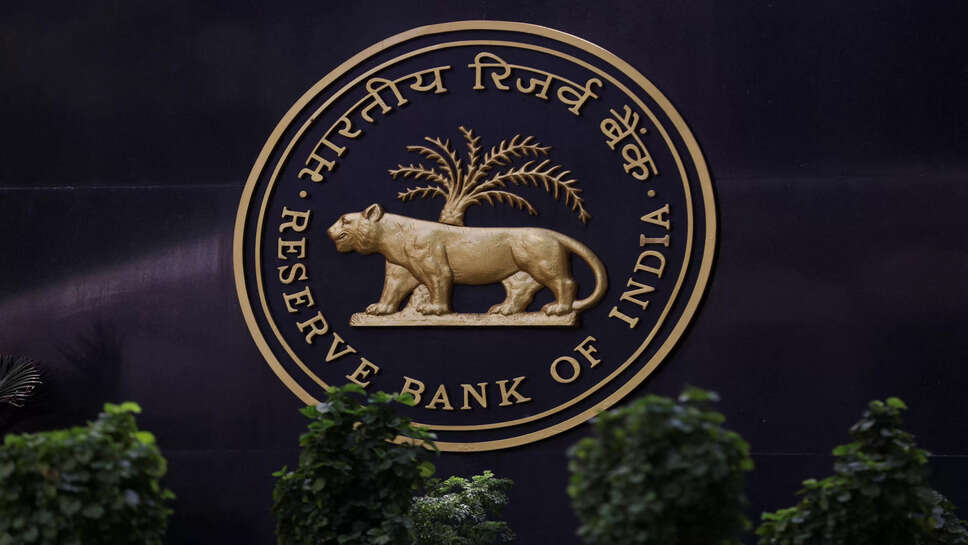India's Consumer Confidence Rebounds, Inflation Worries Loom Ahead: RBI

In a mixed bag of economic signals, the Reserve Bank of India (RBI)’s latest Consumer Confidence Survey reveals that both rural and urban households are feeling more optimistic about the economic outlook. However, the central bank has flagged a potential rise in inflation during the financial year 2026–27 (FY27), raising concerns that rising prices may erode gains in public sentiment and spending capacity.
The survey findings, released alongside the RBI’s bi-monthly monetary policy review, provide insight into how Indian households view the current and future economic climate. While positive sentiment is returning following years of pandemic-related disruptions and inflationary pressures, the data also underscores persistent risks ahead, particularly in the form of global commodity volatility, supply chain instability, and potential domestic price hikes.
Confidence on the Rise in Cities and Villages
According to the RBI’s survey, consumer confidence has improved steadily over the past three quarters. This trend has been recorded in both urban centers and rural regions, suggesting a broad-based recovery in household perceptions of income, employment opportunities, and spending ability.
In rural areas, increased agricultural income, better monsoon predictions, and expanding access to government welfare programs have buoyed sentiment. Households in these regions report stronger expectations for improved job availability and higher wages, particularly in non-farm sectors like construction, transport, and rural services.
Urban consumers, meanwhile, are expressing greater optimism about their personal financial situation and the overall economic environment. A surge in hiring across IT, retail, hospitality, and manufacturing sectors, combined with easing fuel prices and stable interest rates, has contributed to the upbeat mood. The return of consumer demand for discretionary goods, travel, and housing has also helped boost confidence.
Notably, consumers in Tier 2 and Tier 3 cities showed a sharper rise in confidence compared to metro residents, indicating the growing economic potential of India’s smaller urban clusters.
Spending Sentiment Gathers Steam
The survey highlights a notable increase in households’ willingness to spend on both essential and non-essential items. This uptick in sentiment is particularly pronounced in categories like clothing, household goods, electronics, and personal care.
Durables and lifestyle products, which had seen lukewarm demand during the high-inflation phase of 2022–2023, are now witnessing a revival. Retailers and consumer brands are reporting higher footfall and sales, especially in semi-urban and rural markets. E-commerce platforms also note that smaller towns are now accounting for a larger share of orders.
Furthermore, the intention to spend on travel, education, and real estate has risen, indicating stronger faith in long-term financial stability. Some of this recovery is attributed to pent-up demand, while the rest is driven by improved job security and a more stable cost-of-living environment in the past year.
Inflation Cloud on the Horizon
While the overall consumer mood is improving, the RBI’s outlook for inflation in FY27 serves as a cautionary counterpoint. The central bank anticipates that price pressures, which have been largely contained in FY25 and FY26, may intensify going forward.
Factors contributing to this forecast include:
-
Global Oil Prices: Geopolitical tensions and supply chain uncertainties may push crude oil prices higher.
-
Food Inflation: Fluctuations in agricultural output, especially due to climate volatility, could raise food prices.
-
Imported Inflation: The weakening of the rupee or shifts in global trade dynamics may lead to increased import costs.
-
Structural Cost Pressures: Rising input costs in construction, energy, logistics, and labor could be passed on to consumers.
RBI officials noted that while current inflation levels are within the target range, the possibility of breaching the upper limit (6%) in FY27 cannot be ruled out, particularly if global shocks or domestic supply constraints emerge.
Policy Implications and the Central Bank’s Stance
The RBI, while maintaining a cautious policy tone, emphasized its readiness to act proactively if inflationary trends accelerate. For now, it has chosen to keep the repo rate unchanged to support growth, particularly as early signs of economic recovery become more visible across sectors.
However, the central bank has reiterated that inflation targeting remains its primary mandate. If the forecasted inflation trend begins to manifest earlier than expected, the RBI may consider revising interest rates or adjusting liquidity measures to stabilize prices.
At the same time, the RBI has encouraged fiscal prudence at both central and state levels, calling for better management of food subsidies, fuel taxation, and infrastructure spending to prevent overheating of the economy.
The Dichotomy: Growth vs. Price Stability
The current landscape presents a familiar dilemma for policymakers: how to balance growth with inflation control. On one hand, rising consumer confidence and increased spending are positive indicators of recovery and resilience. On the other, any significant rise in inflation can quickly dampen sentiment, hurt savings, and force the RBI into tightening mode — which could slow down credit flow and business expansion.
Economists suggest that India is at a delicate juncture. While the short-term recovery looks promising, sustaining it over the medium term will require calibrated monetary and fiscal strategies, as well as continued vigilance on the supply side of inflation.
Industry and Market Reactions
India Inc. has responded positively to the findings on consumer confidence, with retailers, FMCG companies, automobile manufacturers, and real estate developers expressing optimism about upcoming quarters. The festive season, traditionally a high-demand period, is expected to further boost sales and economic activity.
Stock markets also responded favorably, reflecting hope that consumer-driven growth will strengthen corporate earnings. However, concerns about FY27 inflation forecasts tempered enthusiasm among bond investors and rate-sensitive sectors like banking and housing.
Watchful Optimism
The key takeaway from the RBI survey is a cautious yet optimistic outlook for India’s economy. Rising consumer confidence is an encouraging sign of recovery, resilience, and growing financial empowerment across all segments of the population. However, the looming threat of inflation in FY27 is a reminder that economic momentum must be nurtured responsibly.
For households, it may be a time to enjoy the benefits of a stabilizing economy — but with an eye on prudent spending and saving. For businesses and policymakers, the challenge will be to sustain demand without triggering an inflation spiral.
As India marches toward its centennial of independence in 2047 with ambitious economic goals, the next few years — including FY27 — will test the nation’s ability to balance aspiration with stability. The path ahead will demand both foresight and flexibility.
